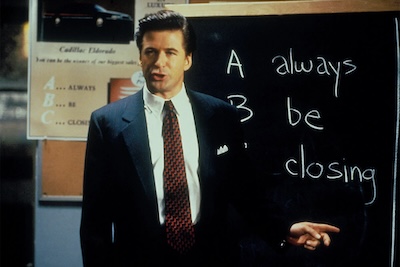After 28 Days and 28 Weeks, moviegoers might think they know what to expect from 28 Years Later, the third installment of the zombie film series, but they’d be wrong. The writing/directing team of Alex Garland and Danny Boyle return to the scene after giving over 28 Weeks to writer/director Juan Carlos Fresnadillo, who made a bigger film than the original. One might think that Garland and Boyle might go even bigger still, as is the nature of most sequels, but one would be wrong again.
While there is plenty of zombie-fueled mayhem in 28 Years Later, Garland and Boyle tell a decidedly smaller story than either of its predecessors. Following the opening scene of a house being overrun by the infected, the film shifts to an island off the Scottish Coast, where a colony of survivors attempts to establish a sustainable life. As we meet the islanders, we quickly discover how rugged their lives are. It’s like going back to medieval times with H.G. Wells. The island’s occupants use bows and arrows to kill the zombies and have a large wooden gate to keep the infected out. At low tide, they have a path that leads to the mainland, allowing them to enter the Highlands and seek supplies. This is a mission fraught with danger, as there is no shortage of Rage-afflicted creatures offshore.
As a questionable rite of passage, a man (Aaron Taylor-Johnson) takes his son Spike (an excellent Alfie Williams) through the path and into harm’s way. The father wants his 12-year-old son to get his first kill and learn how to navigate the mainland. Spike has become an excellent marksman, but as Warren Zevon once sang, “You’re a whole different person when you’re scared.” Spike has no trouble dispatching the slug-like zombies that crawl around the dirt looking for worms to eat, but the upright zombies have evolved into bigger and faster creatures. Shooting them in the kill spot is no easy feat.
Unsurprisingly, events go sideways, leading to a harrowing late-night run to the island as high tide comes in, threatening to wash them away if the massive (and disturbingly well-hung) Alpha Zombie doesn’t run them down first. From there, the film turns into something else altogether. Spike learns that there is a doctor in the Highlands who may be able to help his increasingly ailing mother (the always terrific Jodie Comer). Spike and his mother then begin a treacherous journey on the mainland to reach Dr. Kelson (the great Ralph Fiennes).
Of all the possibilities I might have expected from 28 Years Later, I must confess that a mother/son road movie was not on the list. Garland and Boyle take significant risks with this third installment beyond the simplified plot line. Boyle consistently incorporates surreal touches, such as odd sound effects, and inserts from black-and-white films of medieval-era soldiers going into battle. Even more wrong-footing is the inspirational score by the group Young Fathers, which plays throughout the film, often during less than inspirational moments.
The strange touches and counterintuitive music will likely make the film less accessible to some, but you can’t knock the courage of Garland and Boyle. 28 Years Later takes it even further during the film’s close, where a flamboyant group of zombie killers arrive on the scene. The film features several dream sequences, and the fact that the ending wasn’t one of them certainly caught me off guard.
These are gutsy choices made by the film’s creators, and to my mind, they paid off handsomely, especially when the uplift of the music finally does match the scene. This may not be the zombie movie 28 film enthusiasts were hoping for, but it might well be more than we deserve. 28 Years Later is not boilerplate. It’s more personal, more moving, and boldly experimental. I dare say it’s an arthouse movie with flesh-shredding creatures. Who knew that was in the cards?
To be fair to this series of films, all three movies are very smart, with the first two proving to be prescient. 28 Days Later presents a pandemic created by human overreach. 28 Weeks Later showcases a city under martial law and the subsequent militarization that follows. Does any of this sound familiar? If so, let’s hope that 28 Years Later isn’t a cinematic crystal ball, as it puts forth the complete breakdown of a formerly first-world society.
Yeah, let’s hope that isn’t what’s next.








